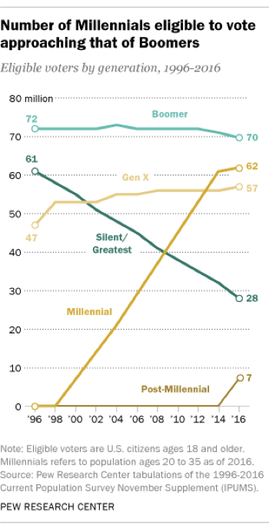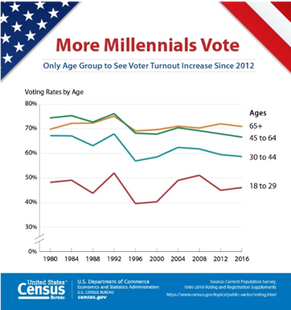By Gabrielle Huff
| TOLEDO, Ohio - As of the 2016 election, millennials, those aged 20 to 35, make up the second largest electorate group in the nation. With approximately 62,000,000 members, only the Baby Boomer generation surpasses them, boasting a group of more than 70,000,000 Americans, according to the Pew Research Center. For decades, the United States Census Bureau has tracked and reported voting patterns for U.S. elections. Since the 1960’s, 18-29 year old voters have voted far less than any other age group, usually anywhere between 40% to 50%. In the 2016 presidential election:
These statistics depict the large discrepancies in voting turnout that is present in terms of age. Out of these statistics, there is some promise for younger voters in America. The 18-29 year old voting block was the only group that saw an increase in voter turnout out |
from the 2012 to 2016 election, the U.S. Census Bureau reported. 45% voted in 2012, compared to 46.1% in the 2016 election. All other age groups saw a decline in voter turnout.
| Nationwide, there are many efforts to encourage younger voters to head to the polls, which could explain this increase in turnout. One of these is the Campus Vote Project, a nationwide nonprofit organization that works on college campuses to encourage voting and reduce any barriers that may be affecting college students’ ability to vote. Their website states the organization’s mission, which is, “Campus Vote Project works with universities, community colleges, faculty, students and election officials to reduce barriers to student voting. Our goal is to help campuses institutionalize reforms that empower students with the information they need to register and vote.” |


